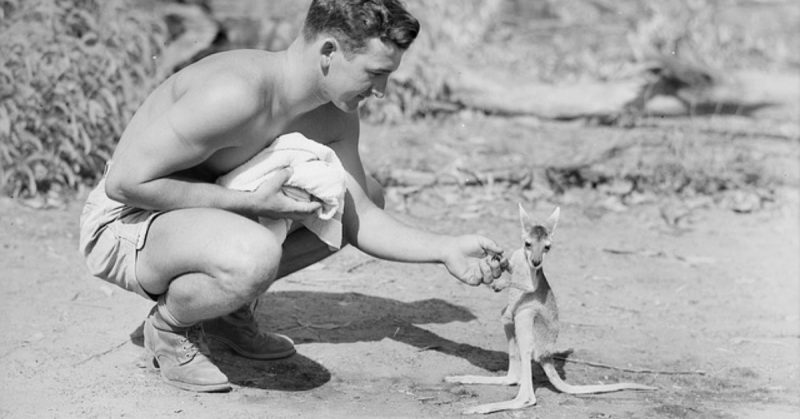Other uniquely Australian animals and birds were smuggled by troops to the Egyptian and other First World War fronts, such as wallabies, kookaburras, koalas, and a few other species.
The First and Second World Wars saw various unusual animal mascots being brought along by a number of different units from all over the world, from bears to reindeer, and from antelopes to baboons.
For a few units from the Land Down Under, their mascot was the most quintessentially Australian of animals: the kangaroo.
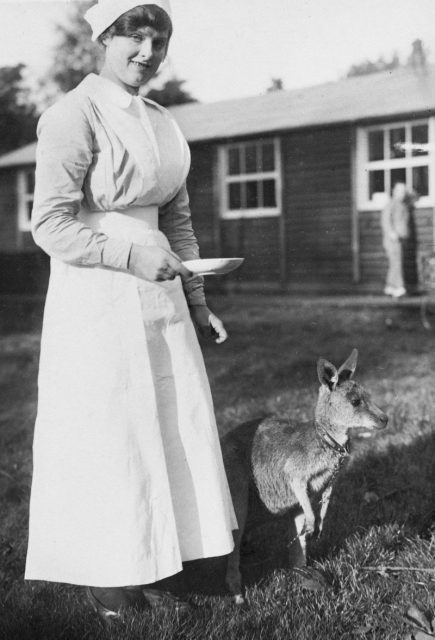
Australia–a relatively new nation which only became an independent country in 1901–was one of the first countries to pledge military support to Britain as war seemed imminent in 1914. As soon as war was officially declared on August 4th 1914, Australia immediately began mobilizing its men for war.
Australian troops ended up fighting on three different continents during the First World War. Their presence in Egypt was particularly memorable, with many First World War photographs of Australian troops depicting them alongside a kangaroo, a somewhat unexpected sight in North Africa.
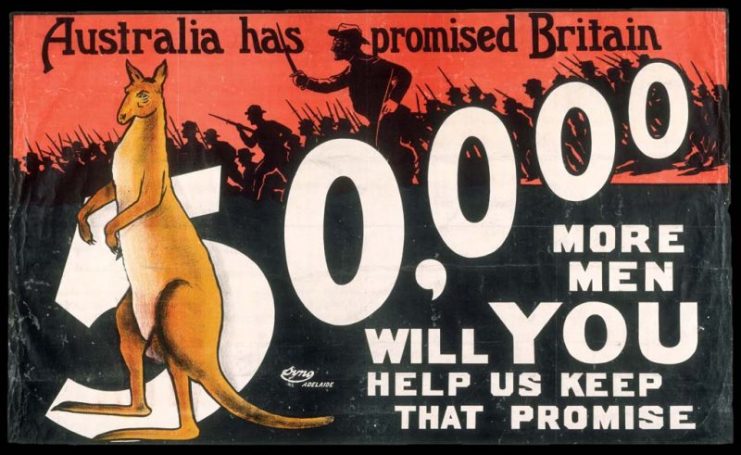
While many other animals are unique to Australia and are found nowhere else in the world–including koalas, platypuses, echidnas, wombats, and wallabies–the kangaroo has become the country’s unofficial animal representative.
Australia’s coat of arms features a kangaroo, while a number of Australian sports teams are named after the iconic animal.
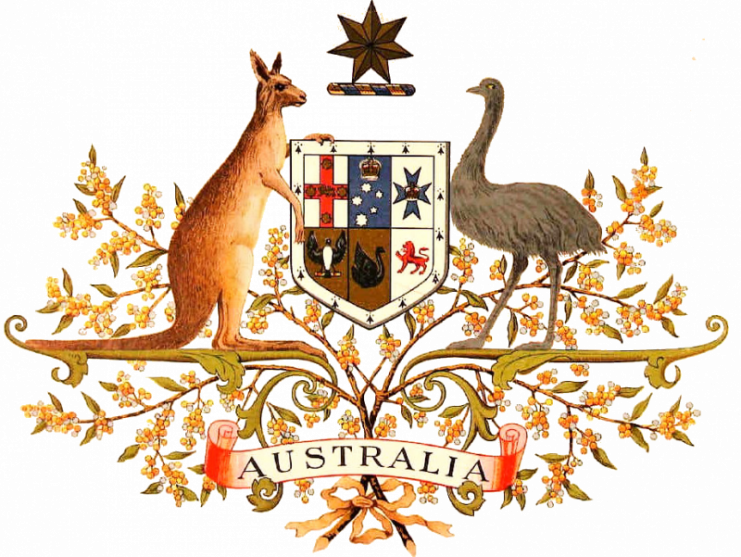
Although many of the young Australian men who joined the Australia and New Zealand Army Corps (Anzac) were patriotic supporters of Britain, their love and loyalty was to Australia first and foremost.
As such, it came as no surprise that they would want to take unique symbols and emblems of their homeland with them when they departed to fight on distant battlefields on the other side of the world.
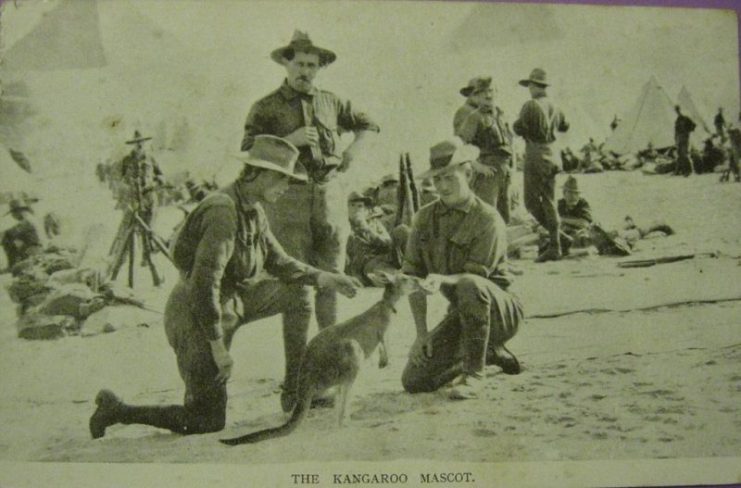
What could be a more quintessentially Australian symbol than a kangaroo? A number of kangaroos were smuggled on board the transport ships that carried Australian troops to the Egyptian theater.
Other uniquely Australian animals and birds were smuggled by troops to the Egyptian and other First World War fronts, such as wallabies, kookaburras, koalas, and a few other species.
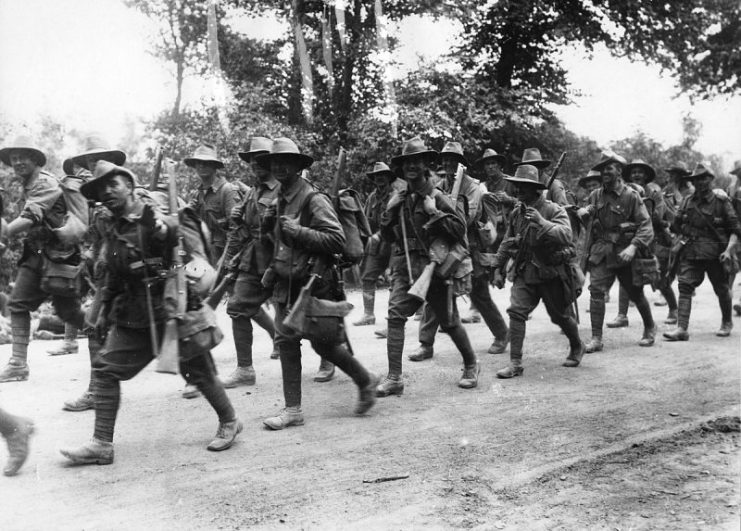
Unfortunately, the voyage itself was enough to bring some of these animals’ lives to an end. One Australian soldier described how his unit’s pet wallaby leaped overboard into the open ocean and tried to swim away before being swallowed by the waves.
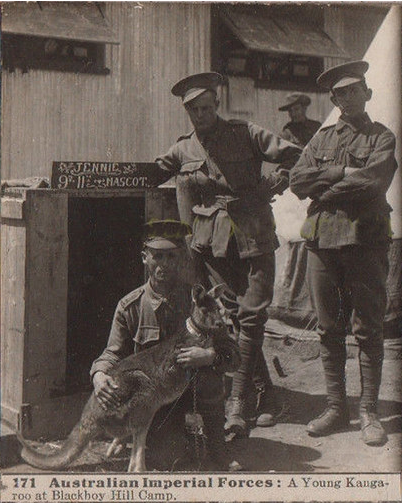
The animals that made it to Egypt generally lived a pampered existence and were the source of much interest for locals and colonial residents alike.
Children were especially delighted to see kangaroos and wallabies walking around the Australian camps. But many Egyptians who had never heard of, let alone seen a kangaroo were quite terrified of them until they learned that they were relatively harmless.
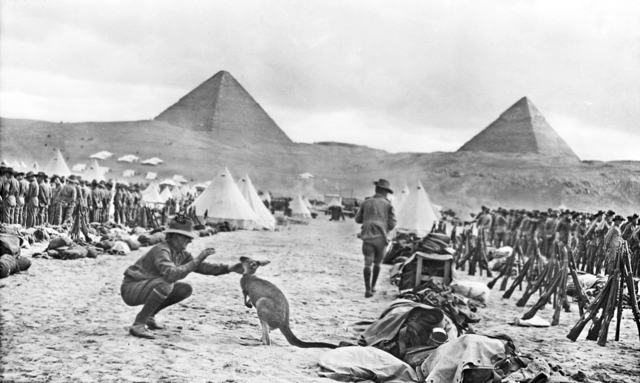
Food proved to be a bit of a problem for some of the kangaroos kept by Australian troops. Out in the Egyptian desert there was very little in the way of vegetation they could eat, so some troops cultivated patches of grass in the camps for the kangaroos to feed on.
They supplemented the kangaroos’ and wallabies’ diets with tibin, a mix of chaff and hay used by British forces to feed their horses in the desert.
The kangaroos and wallabies in the Australian camps served a more important purpose than as a mere form of distraction, entertainment, or a reminder of home–they also helped keep troop morale up.
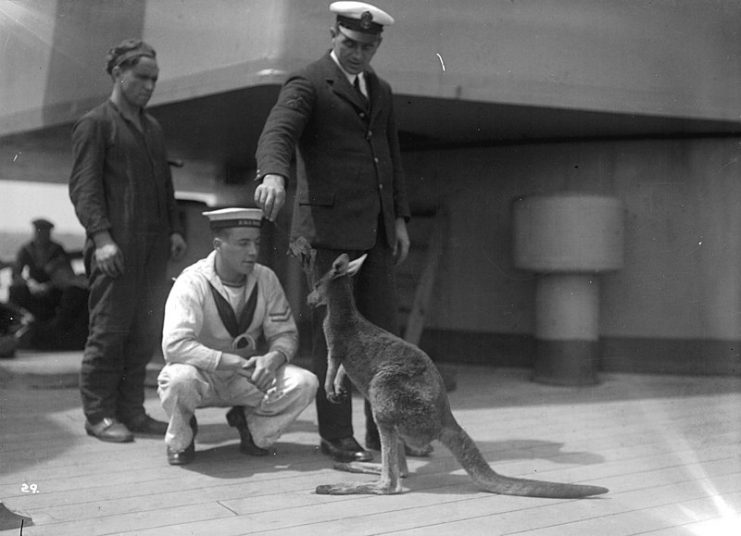
In a conflict that was increasingly savage and bloody and with often horrific living conditions in the camps, maintaining high morale was a vital function, and the simple presence of a kangaroo or wallaby went a good way toward keeping Anzac troops as happy as possible under the circumstances.
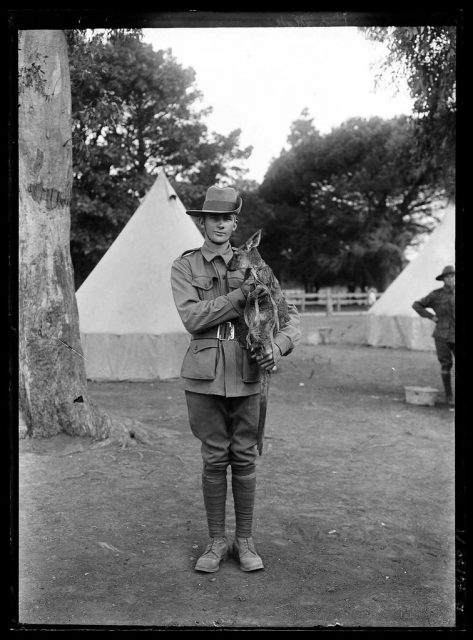
Of course, the Anzac troops were not permanently stationed in Egypt, and many Australian units were transferred to other fronts of the war. This sometimes meant that the kangaroos, wallabies, and other animals that had served as these units’ pets and mascots could not be brought along.
Fortunately the animals were not simply abandoned and left to their fate in the Egyptian desert. A number of kangaroos, wallabies, and other Australian animals were donated by Australian units to the Cairo Zoological Gardens where they lived out the rest of their lives in peace.
A few, however, made it to Europe with one or two Anzac units.
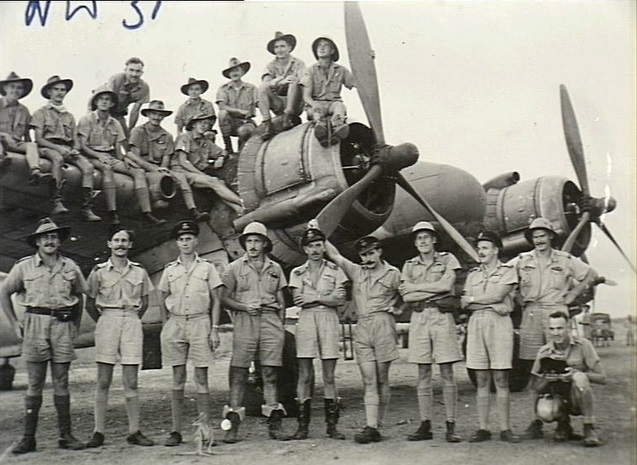
There is now a population of wild wallabies in France, but while it is tempting to imagine that they are the descendants of First World War mascots that either escaped or were set loose by their Australian units after the war, these contemporary animals are actually descendants of a group of wallabies which escaped from a zoo in the 1970s.
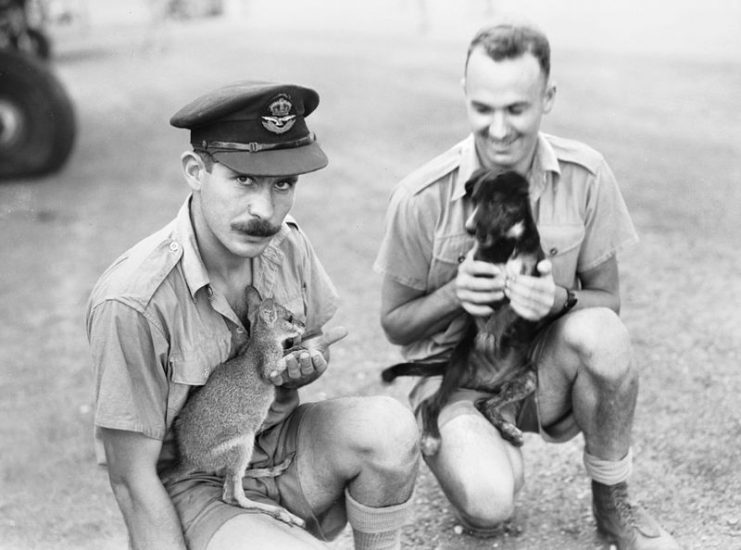
Read another story from us: ANZACS: The Australians & New Zealanders at Gallipoli, 1915
During the Second World War, Australian troops again smuggled some native Australian animals with them as mascots, including by somehow coaxing a kangaroo into a medical supply box that was sent to Malaysia. Yet during the Second World War, Australia’s animal exports were not quite on the same scale as during the First World War.
Nonetheless, these uniquely Australian animals continued to inspire Australian troops and boost morale, just as they had done during the First World War.
